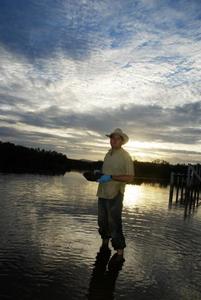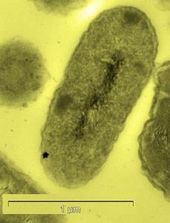From prehistoric times and Egyptian goldmines; from the gifts of the Magi in the New Testament to King Midas' coins, not only were alchemists captivated by this shiny yellow metal, but once upon a time, we converted our skills and energy into this precious metal when our society's monetary system was based on the gold standard.
Robert Krulwich in his article, Galactic Gold: A Valentine Story writes:
According to Neil deGrasse Tyson, director of New York City's Hayden Planetarium, all gold on Earth started out in the center of a star; he says stars are "in the business of cosmic alchemy."
It takes the power of a supernova explosion to make heavy elements like gold.
After the explosion, those few gold atoms are cast deep into the universe where they sit in empty space for eons. Eventually, some of the atoms may join a cloud. That cloud may condense into a planet.Scientists for years wondered why gold appears on Earth in two forms: in solution or in solid deposits near the Earth's crust.
Once inside a planet, some of the atoms may make it near the surface where we can come and dig them up.
So every atom of gold in your wedding ring was forged in a collapsing star, and then traveled across the universe to get to your finger. All the gold we wear and all the gold we give has made this same journey."
In 2001, a team of UMass microbiologists led by noted researcher Derek Lovley extracted gold solids from water containing dissolved gold by using bacteria he used to control polluted water in the US. As the bacteria ingested the liquid gold, they left behind solid gold.
So our precious solid gold is made from bacterium excretion.
The recent discovery of the Australian scientist, Frank Reith found that the bacterium "Cupriavidus metallidurans" catalyses the biomineralisation of gold by transforming toxic gold compounds to their metallic form using active cellular mechanism." They hope to make biosensors in order to find gold deposits in the future.
Though, being able to find gold with biosensors is great for those who want to harvest the treasures of the Earth; the truly more exciting aspect of these discoveries is how they tie into ancient alchemical observations.
Lapidus, In Pursuit of Gold: Alchemy in Theory and Practice, mentions:
Now to properly understand how the alchemist's mind worked, it's necessary to know that he believed that metals have a life of their own, equal to animals and vegetables. This being so, since in every department of nature there is a constant progression of birth, growth and increase, this natural evolutionary law applies to metals as well. Otherwise one may ask quite logically, why should nature stop at metals? Alchemists maintain that nature does not stop at metals.It is only recently that research shows these heavy metals are changeable: In Leonid Dubrovinsky's study, Noblest of All Metals Is Structurally Unstable at High Pressure, he explains:
... results confirm the theoretical predictions about the phase changes in gold. "These new experimental and theoretical results remind us that there is no "absolute" unchangeable material, and the noblest of all metals, gold, is not an exception from this rule"Alchemy is also resurfacing in the research of Professor William R. Newman, of Indiana University. Mr. Newman in association with The Newton Project of the University of Sussex has set up on the web, research of Sir Isaac Newton's alchemical manuscripts; the discovery of which shocked the world when Sotheby's published a catalogue of some three-hundred and twenty-nine of Newton's handwritten manuscripts in 1936. Professor Newman has recreated many of Newton's experiments.
He mentions in Jeremy Shere's article, Sir Isaac's Alchemy that:
"You have to strip your mind of the modern stereotypes about alchemy. It meant much more than trying to transmute lead into gold. By the 17th century, alchemy involved a number of sophisticated chemical techniques and technologies, including distillation, sublimation, purification, and crystallization."It looks as if alchemy is making a comeback, and modern science is, albeit hesitantly, resurfacing the knowledge of the ancients; of course in unnecessary dribbles, bound in endless red tape, "years' of slow inconclusive research, and vague references to the ancient sources.
Seventeenth-century medicinal alchemists, Newman says, made advances in pharmacology by turning away from a traditional reliance on plants and toward minerals. Iatrochemists, as they were known, pioneered methods of separating out the more virulent components of minerals to create relatively non-toxic, mineral-based medications. Alchemists also invented a wide range of pigments used for painting and dying, pioneered the manufacture of acids, and invented distillation methods used to make "strong waters," or alcohol.
Even the seemingly quixotic quest to transmute lead and other base metals into gold was rooted in the 17th-century theory that Aristotle's four species of matter--earth, water, air, and fire--ultimately consisted of the same base material. As modern quantum physics has shown, at the most miniscule levels, matter is made of interchangeable protons, neutrons, quarks, gluons, and other even more esoteric and mysterious elementary particles. In theory it would be possible, given the proper technology, to make lead become gold. So alchemy was not only grounded solidly in the physical and chemical knowledge of the 17th century--in some ways, it was way ahead of its time."
Is the formula for the Philosopher's Stone right under our noses?
According to Eirenaeus Philalethes:
"Thus you see though our stone is made of gold alone, yet it is not common gold; the latter must be dissolved in our mineral water which does not wet the hands..."





Reader Comments
to our Newsletter